Abstract
In suitable doses dichloroisoprenaline blocks the initial transient vasodilatation, but leaves unchanged the subsequent vasoconstriction, normally seen during intra-arterial infusion of adrenaline to the human forearm. Dichloroisoprenaline blocks both the initial transient large vasodilatation, and the subsequent sustained modest vasodilatation, normally seen in the forearm when adrenaline is infused intravenously. Dichloroisoprenaline abolishes the dilator effects of intra-arterial isoprenaline. These findings are consistent with the hypothesis that the difference between the responses to intra-arterial and intravenous adrenaline is due to the conversion in the body, elsewhere than in the forearm, of adrenaline to an isoprenaline-like substance.
Full text
PDF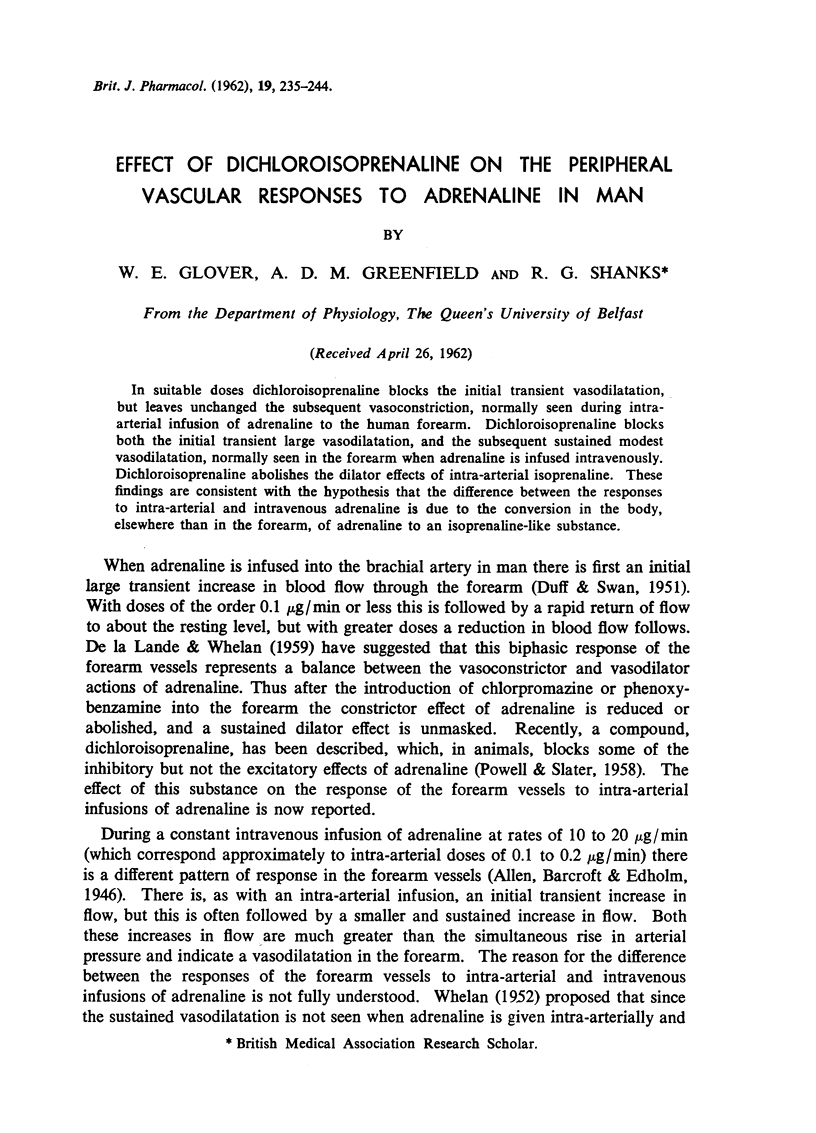
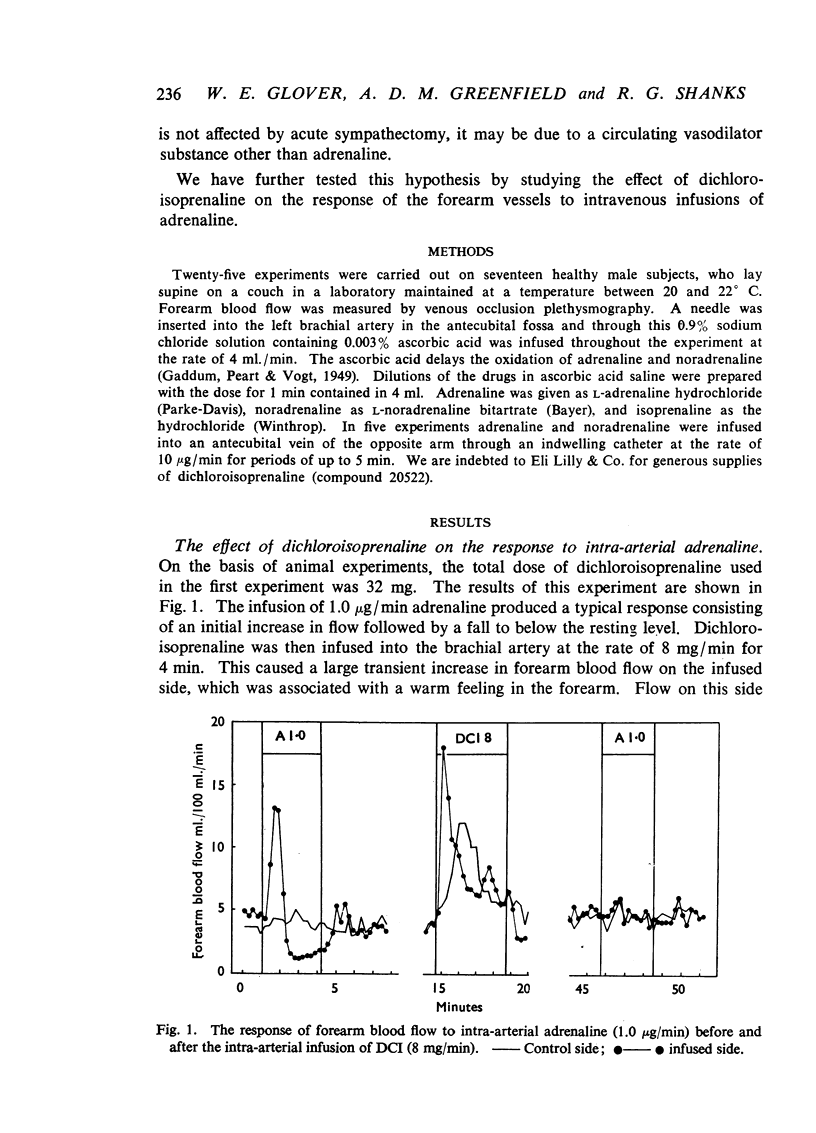

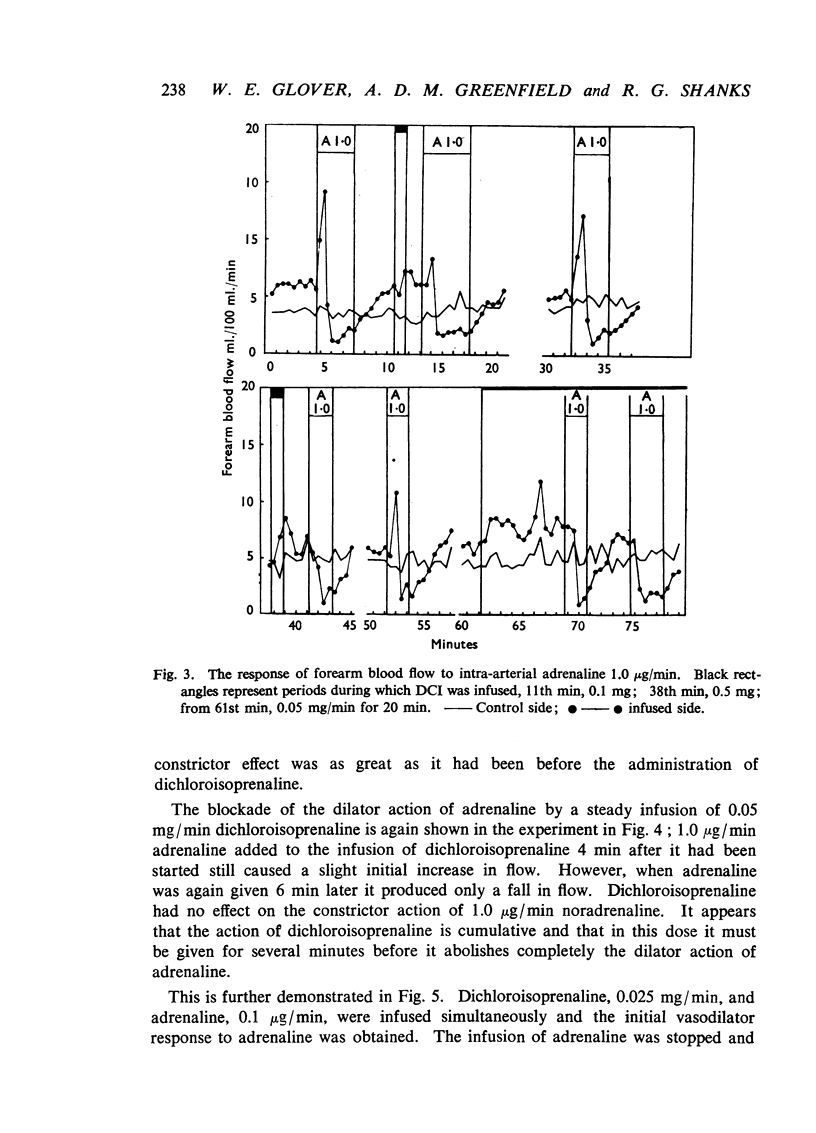
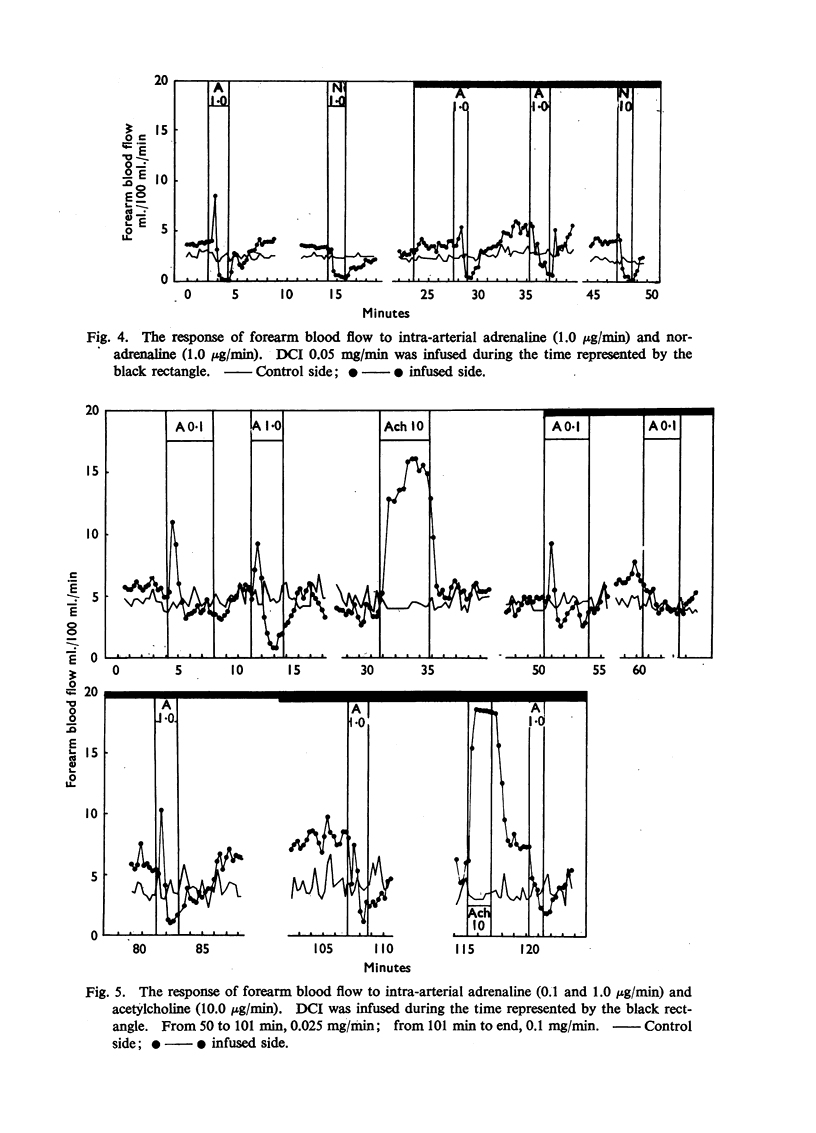
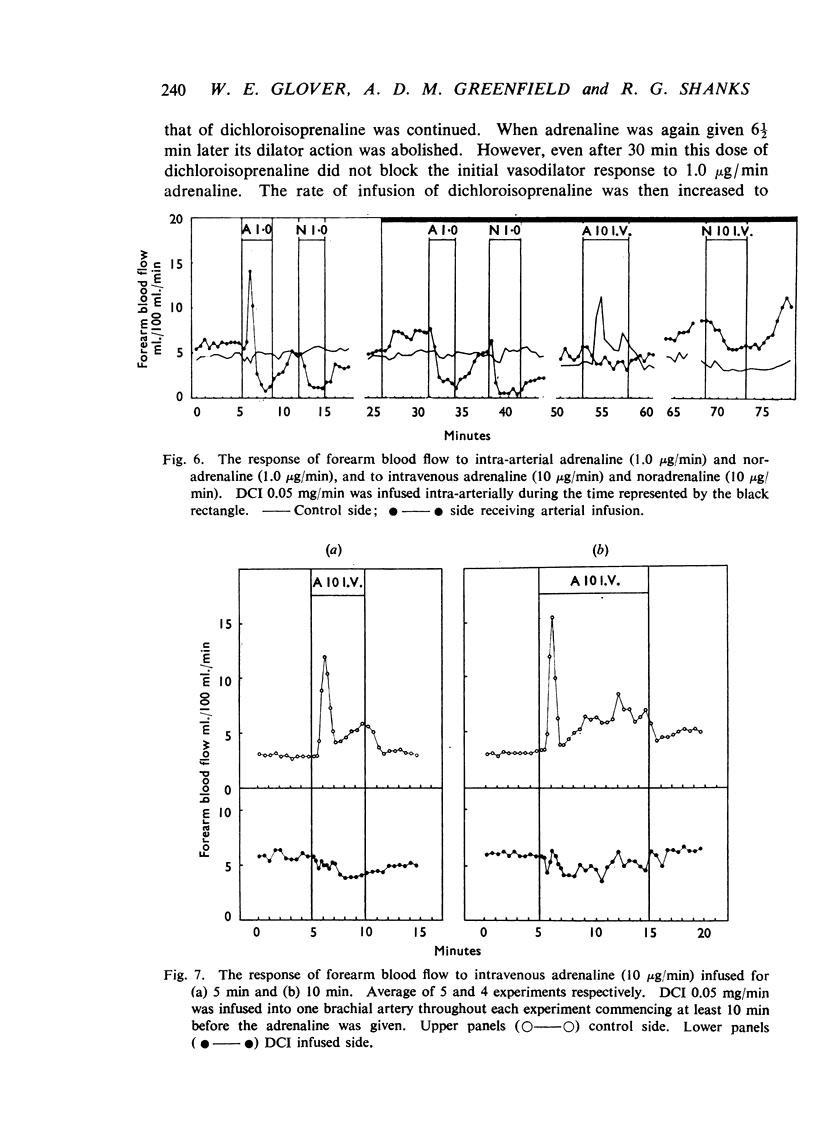

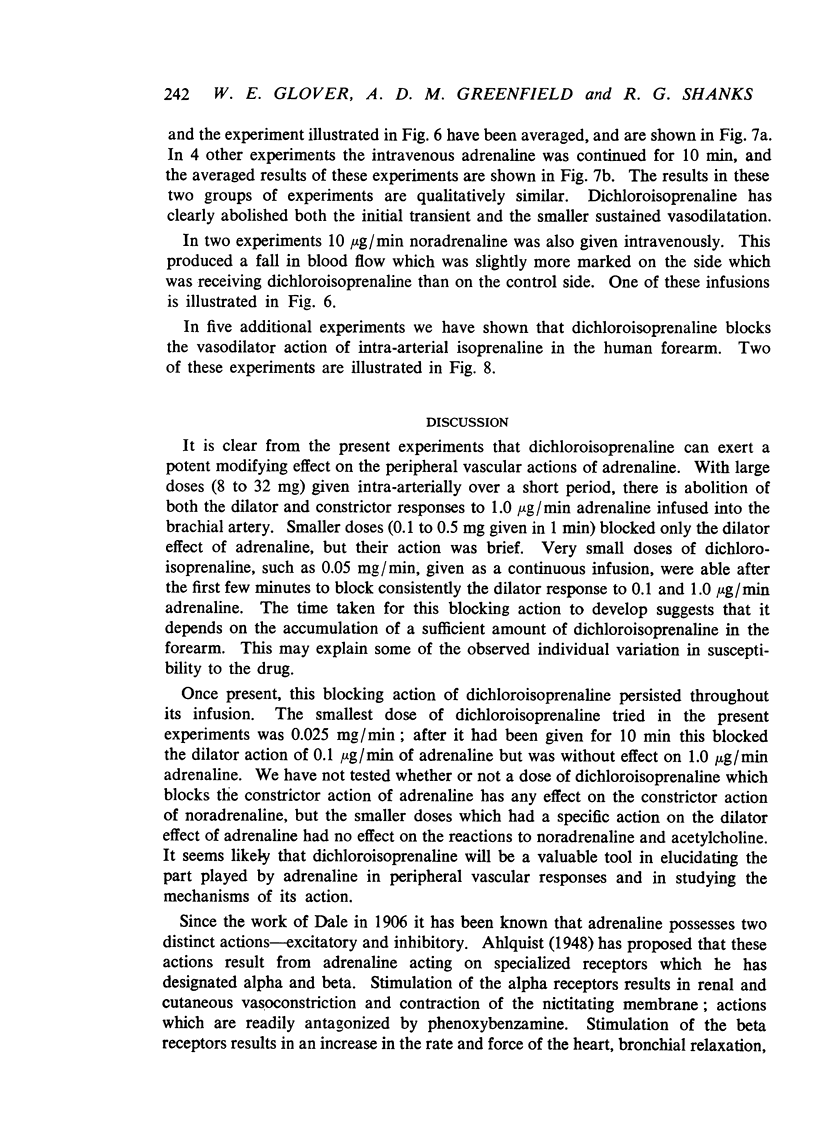
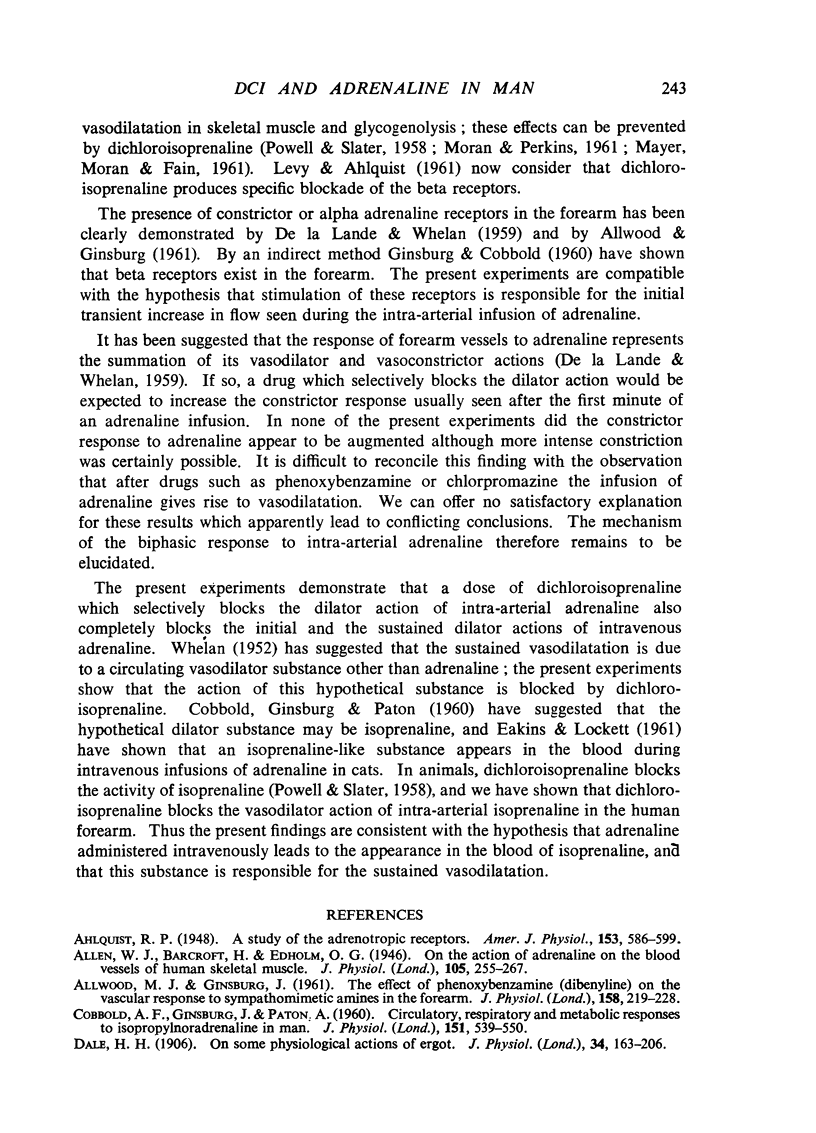

Selected References
These references are in PubMed. This may not be the complete list of references from this article.
- ALLWOOD M. J., GINSBURG J. The effect of phenoxybenzamine (dibenyline) on the vascular response to sympathomimetic amines in the foream. J Physiol. 1961 Sep;158:219–228. doi: 10.1113/jphysiol.1961.sp006766. [DOI] [PMC free article] [PubMed] [Google Scholar]
- Allen W. J., Barcroft H., Edholm O. G. On the action of adrenaline on the blood vessels in human skeletal muscle. J Physiol. 1946 Dec 6;105(3):255–267. [PMC free article] [PubMed] [Google Scholar]
- COBBOLD A. F., GINSBURG J., PATON A. Circulatory, respiratory and metabolic responses to isopropylnoradrenaline in man. J Physiol. 1960 Jun;151:539–550. doi: 10.1113/jphysiol.1960.sp006458. [DOI] [PMC free article] [PubMed] [Google Scholar]
- DE LA LANDE I. S., WHELAN R. F. The effect of antagonists on the response of the forearm vessels to adrenaline. J Physiol. 1959 Oct;148:548–553. doi: 10.1113/jphysiol.1959.sp006305. [DOI] [PMC free article] [PubMed] [Google Scholar]
- DUFF R. S., SWAN H. J. C. Further observations on the effect of adrenaline on the blood flow through human skeletal muscle. J Physiol. 1951 Jun;114(1-2):41–55. doi: 10.1113/jphysiol.1951.sp004602. [DOI] [PMC free article] [PubMed] [Google Scholar]
- Dale H. H. On some physiological actions of ergot. J Physiol. 1906 May 31;34(3):163–206. doi: 10.1113/jphysiol.1906.sp001148. [DOI] [PMC free article] [PubMed] [Google Scholar]
- EAKINS K. E., LOCKETT M. F. The formation of an isoprenaline-like substance from adrenaline. Br J Pharmacol Chemother. 1961 Feb;16:108–115. doi: 10.1111/j.1476-5381.1961.tb00303.x. [DOI] [PMC free article] [PubMed] [Google Scholar]
- Gaddum J. H., Peart W. S., Vogt M. The estimation of adrenaline and allied substances in blood. J Physiol. 1949 Jun 15;108(4):467–481. doi: 10.1113/jphysiol.1949.sp004350. [DOI] [PMC free article] [PubMed] [Google Scholar]
- LEVY B., AHLQUIST R. P. An analysis of adrenergic blocking activity. J Pharmacol Exp Ther. 1961 Aug;133:202–210. [PubMed] [Google Scholar]
- MAYER S., MORAN N. C., FAIN J. The effect of adrenergic blocking agents on some metabolic actions of catecholamines. J Pharmacol Exp Ther. 1961 Oct;134:18–27. [PubMed] [Google Scholar]
- MORAN N. C., PERKINS M. E. An evaluation of adrenergic blockade of the mammalian heart. J Pharmacol Exp Ther. 1961 Aug;133:192–201. [PubMed] [Google Scholar]
- POWELL C. E., SLATER I. H. Blocking of inhibitory adrenergic receptors by a dichloro analog of isoproterenol. J Pharmacol Exp Ther. 1958 Apr;122(4):480–488. [PubMed] [Google Scholar]
- WHELAN R. F. Vasodilatation in human skeletal muscle during adrenaline infusions. J Physiol. 1952 Dec;118(4):575–587. doi: 10.1113/jphysiol.1952.sp004819. [DOI] [PMC free article] [PubMed] [Google Scholar]


